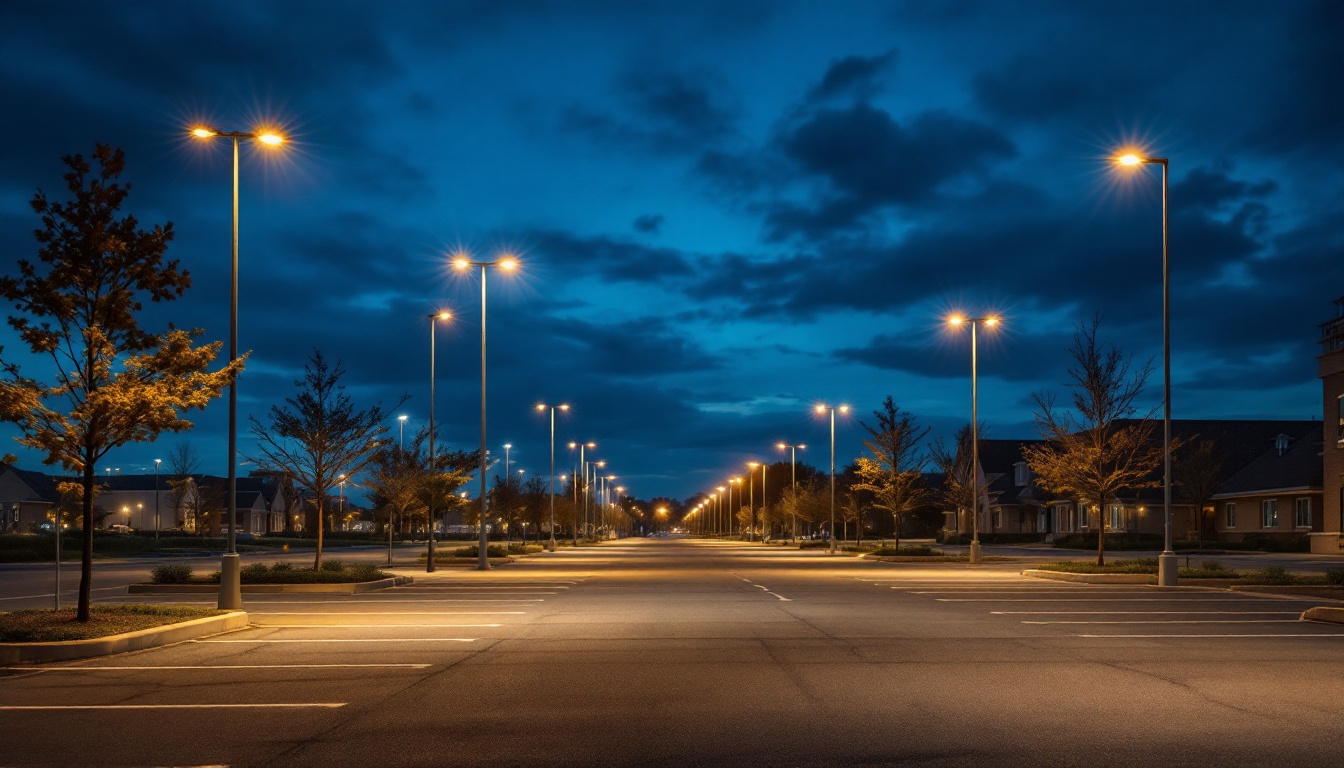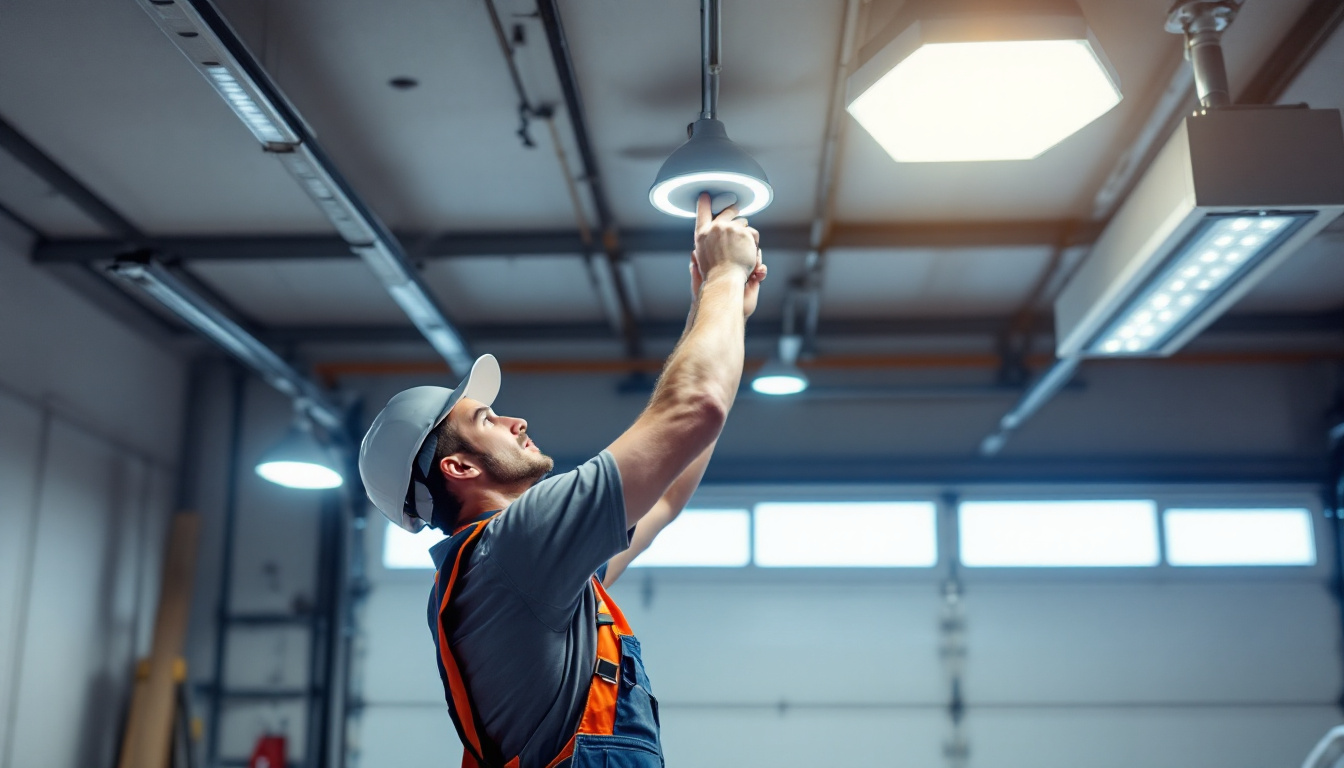
In the world of lighting and electrical installation, ceiling fans have become an essential element of both functionality and aesthetics. For lighting contractors, understanding the intricacies of big fan ceilings is crucial for delivering quality service and ensuring customer satisfaction. This guide aims to equip contractors with the necessary knowledge and insights to excel in this niche.
Big fan ceilings refer to the installation of large ceiling fans, often in commercial or spacious residential settings. These fans not only provide effective air circulation but also serve as striking design features. The size and design of the fan can significantly influence the overall ambiance of a room, making it essential for contractors to grasp the nuances involved. In addition to their functional benefits, big ceiling fans can also enhance the architectural elements of a space, drawing attention to high ceilings or open floor plans. By integrating these fans into the design, contractors can create a cohesive look that marries form and function.
Big ceiling fans offer numerous advantages that extend beyond mere aesthetics. They enhance air circulation, making large spaces feel more comfortable, especially during warmer months. The ability to control airflow can lead to reduced energy costs, as homeowners can rely less on air conditioning systems. In fact, studies have shown that using ceiling fans can allow homeowners to raise their thermostat settings by several degrees without sacrificing comfort, translating into significant savings on energy bills over time.
Moreover, the visual impact of a large fan can elevate the design of a room. Whether in a modern office or a rustic living room, the right ceiling fan can complement the existing decor and create a focal point that draws the eye. The variety of finishes and materials available—such as wood, metal, or even glass—means that there is a perfect fan for every style, from sleek and minimalist to ornate and traditional. This versatility allows homeowners to express their personal style while enjoying the practical benefits of improved airflow.
There are various types of big ceiling fans available on the market, each designed for specific environments and purposes. industrial ceiling fans, for instance, are typically used in warehouses and large commercial spaces, emphasizing durability and efficiency. These fans are engineered to withstand the rigors of high-traffic areas and often feature robust construction and powerful motors to ensure optimal airflow in expansive settings.
On the other hand, residential big ceiling fans come in a range of styles, from contemporary to traditional. Many modern designs incorporate smart technology, allowing users to control their fans via smartphone apps or voice commands, adding an extra layer of convenience. Understanding these different types allows contractors to recommend the best options for their clients, ensuring both functionality and style are addressed. Furthermore, considering the specific needs of the space—such as ceiling height and room layout—can help in selecting the most effective fan for the job.
When selecting big ceiling fans, several key features should be taken into account. Blade size and pitch are critical, as they directly affect airflow efficiency. A fan with a larger blade span can move more air, making it suitable for larger spaces. Additionally, the materials used for the blades can impact performance; for example, wooden blades may offer a more traditional look while also providing excellent airflow, whereas metal blades can enhance a modern aesthetic.
Additionally, motor quality is paramount. A powerful, quiet motor ensures longevity and minimizes noise, which is particularly important in residential settings. Energy efficiency ratings should also be reviewed, as they can impact long-term operational costs for clients. Many big ceiling fans now come equipped with energy-efficient LED lighting options, allowing for a dual-purpose fixture that not only cools the space but also illuminates it effectively. This combination of features makes big ceiling fans a smart investment for both comfort and energy savings in any setting.
Installing big ceiling fans requires a thorough understanding of both electrical systems and structural integrity. Contractors must ensure that the ceiling can support the weight and movement of the fan. This often involves assessing the joists and possibly reinforcing them to accommodate the installation.
Electrical requirements for big ceiling fans can vary significantly based on the model and design. Most fans will require a dedicated circuit, especially if they come with additional features such as integrated lighting or remote controls. Contractors should be familiar with local electrical codes to ensure compliance and safety.
It is also advisable to install a fan-rated electrical box, which is specifically designed to support the weight and motion of ceiling fans. This not only enhances safety but also prevents potential damage to the ceiling over time.
Proper height and placement are crucial for maximizing the efficiency of big ceiling fans. Ideally, the fan should be installed at least 7 to 9 feet above the floor to ensure optimal airflow and safety. In spaces with high ceilings, downrods may be necessary to achieve the correct height.
Additionally, the fan should be positioned in the center of the room for balanced airflow. For larger spaces, multiple fans may be required to achieve adequate air circulation. Contractors should assess the layout of the room and recommend the best placement to their clients.
Regular maintenance of big ceiling fans is essential to ensure their longevity and functionality. Contractors should educate clients on the importance of routine checks and cleaning to prevent dust buildup, which can affect performance and air quality.
Cleaning a ceiling fan involves more than just wiping down the blades. It is important to ensure that all components, including the motor and light fixtures, are free from dust and debris. Using a soft, damp cloth is recommended to avoid scratching the blades.
Contractors can also suggest using a fan duster or an extendable cleaning tool to reach high or difficult areas. Regular maintenance can prevent the need for more extensive repairs down the line, saving clients both time and money.
Even the best ceiling fans can encounter issues over time. Common problems include wobbling, noise, and failure to operate. Contractors should be prepared to troubleshoot these issues effectively.
Wobbling can often be resolved by ensuring that the fan is securely mounted and that the blades are properly aligned. Noise may indicate a need for lubrication or could be a sign of a more serious motor issue. In cases where the fan fails to operate, checking the electrical connections and ensuring that the circuit is functioning is essential.
Each space has unique requirements that dictate the type of ceiling fan that should be installed. Understanding these nuances is vital for lighting contractors who aim to provide tailored solutions to their clients.
In residential settings, aesthetics play a significant role in fan selection. Homeowners often seek fans that complement their decor while providing adequate airflow. For example, a modern home may benefit from sleek, minimalist designs, while a traditional space might require more ornate options.
Additionally, the size of the room should influence the choice of fan. Larger rooms may require fans with a greater blade span, while smaller areas can utilize compact models without sacrificing performance.
In commercial environments, functionality and efficiency are typically prioritized. Industrial ceiling fans are often the go-to choice for warehouses and large retail spaces due to their ability to move large volumes of air effectively.
Moreover, energy efficiency becomes a critical factor in commercial settings, where operational costs can significantly impact the bottom line. Contractors should be well-versed in the various energy-efficient options available and be able to explain the long-term savings to business owners.
Many modern ceiling fans come with integrated lighting options, providing a dual function that can enhance any space. For contractors, understanding how to effectively integrate lighting with ceiling fans can lead to more satisfied clients and additional business opportunities.
Integrated lighting options can range from simple light kits to elaborate chandelier-style fixtures. Each type offers different levels of brightness and ambiance, allowing contractors to recommend solutions that best fit the needs of their clients.
LED lighting is increasingly popular due to its energy efficiency and long lifespan. Contractors should be familiar with the various LED options available and how they can be incorporated into ceiling fan designs without compromising aesthetics.
The control options for ceiling fans with integrated lighting have evolved significantly. Remote controls, wall switches, and smart home integration are now common features. Contractors should be prepared to explain these options to clients, highlighting the convenience and flexibility they provide.
Smart fans, which can be controlled via smartphone apps or voice commands, are particularly appealing to tech-savvy homeowners. Understanding the compatibility of these systems with existing home automation setups can enhance a contractor’s service offering.
The lighting and ceiling fan industry is continually evolving, with new trends and technologies emerging regularly. For contractors, staying informed about these changes is essential to remain competitive and provide the best service possible.
Current design trends often emphasize sustainability and energy efficiency. Many consumers are now looking for eco-friendly options that reduce their carbon footprint. Contractors should be knowledgeable about sustainable products and practices to meet this growing demand.
In addition, the trend toward minimalism has led to an increase in demand for sleek, unobtrusive designs. Understanding these trends allows contractors to recommend products that align with their clients’ preferences and values.
Technological advancements are also shaping the ceiling fan market. Innovations such as smart fans, which can be controlled remotely, are becoming increasingly popular. Familiarity with these technologies can give contractors a competitive edge and enhance the overall customer experience.
Moreover, advancements in energy-efficient motors and blade designs have improved the performance of ceiling fans, making them more effective and quieter than ever before. Contractors should stay informed about these innovations to provide clients with the best possible options.
Big fan ceilings represent a unique intersection of functionality and design in the lighting industry. For lighting contractors, mastering the intricacies of ceiling fan installation, maintenance, and integration with lighting can lead to enhanced customer satisfaction and business growth.
By understanding the benefits, types, and installation considerations of big ceiling fans, contractors can provide tailored solutions that meet the diverse needs of their clients. Staying updated with trends and innovations ensures that contractors remain competitive in a rapidly evolving market.
Ultimately, the expertise gained from this handbook will empower lighting contractors to excel in their field, providing quality service and establishing lasting relationships with their clients.
Ready to elevate your lighting projects with the best in big ceiling fans and lighting solutions? Look no further than LumenWholesale, where we specialize in providing contractors with high-quality, specification-grade lighting products at unbeatable wholesale prices. Say goodbye to local distributor markups and hello to a vast selection of reliable and high-performance lighting that meets the highest industry standards. With LumenWholesale, bulk buying is a breeze, thanks to our hassle-free process and free shipping. Don’t compromise on quality or value—click now to explore our collection and experience the ultimate in affordability and convenience at Wholesale Lighting at the Best Value.

Discover how bed LED strips revolutionize modern lighting with customizable ambiance, energy efficiency, and easy installation.

Discover how a Parking Lot Lighting Calculator can revolutionize safety and efficiency in lighting installations.

Discover essential tips and strategies to sidestep common mistakes in the lighting industry with “4 Goof Ring: Avoiding Pitfalls, A Lighting Contractor’s Guide.” Enhance your expertise and ensure flawless installations every time..

Discover why LED garage ceiling lights are a game-changer for lighting contractors.